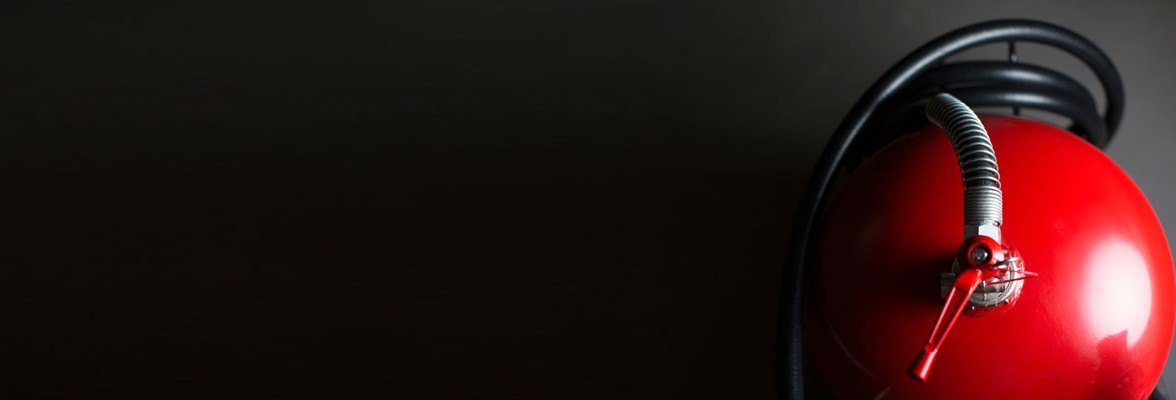YOUR CART
- No products in the cart.
Subtotal:
$0.00
BEST SELLING PRODUCTS


To the untrained eye, all fire extinguishers will put out a fire regardless of their content. However, there are different types and classifications of fire extinguishers based on the fire categories they can extinguish. When choosing a fire extinguisher, selecting the right type for the applicable class of fire is integral to saving lives and preventing property damage.
According to the latest fire loss report from the National Fire Protection Association, thousands of fire-related civilian deaths and injuries and an estimated $18 billion in property damage occurred in 2022. These figures underline the importance of understanding fires, how to put them out and safety measures to take during a fire.
Before getting into the various types of fire extinguishers, you must first learn their connection to fire classes. What are the five different classes of fire that determine the type of extinguisher to use?
A, B, C, D and K are classifications for fires, not extinguishers. Here are the different types of fire extinguishers and their uses:

Carbon dioxide (CO2) extinguishers are filled with pressurized CO2. They are used for Class B and C fires to remove oxygen, an essential element in fires. Since liquid, gas and electricity fires only worsen with water due to conductivity, CO2 is essential for removing oxygen in these situations.
Water extinguishers are the most common and least expensive type of fire extinguisher. They come as jet or spray nozzles, the difference being the amount of pressure each carries. Water fire extinguishers are used to put out Class A fires involving organic solids like plastic, wood and paper.
Besides the common jet and spray nozzle extinguishers, there is a subclass of water-based extinguishers known as water mist extinguishers containing de-ionized water. They have a special nozzle that releases microscopic water particles, creating a pressurized mist capable of putting out A, B and C fires. That said, it is still recommended to use a CO2 extinguisher for Class C fires because they are more effective.
These are specialized extinguishers containing potassium solutions that spray out as a mist, blanketing burning oils in a cool and foamy reaction. Due to their misty release, wet chemical extinguishers are ideal for Class K fires caused by cooking oils and fats, which can splash around if you use other agents like water. Note that the reaction only works with vegetable oil fires, not Class B fires involving fuel.
These fire extinguishers use a powdery agent to put out solid, liquid and gas fires. As multipurpose extinguishers, they can control Class A, B and C fires. If you’re unfamiliar with the different extinguishers or are on a budget, a dry powder extinguisher would be ideal. You can use it to put out an alcohol, gasoline or propane fire. While effective in multiple fire classes, they are unsafe for use in confined spaces.
Use specialist dry powder extinguishers for Class D fires caused by combustible metals. These are different types of dry powder extinguishers that chemically interfere with combustion to extinguish metal fires.
Since fire extinguishers vary, it’s important to select one that fits your needs. Here are tips for choosing the right fire extinguisher for your home or business:
It’s best to arm yourself with fire safety knowledge so you can take measures to prevent one from occurring.
A few crucial at-home fire safety tips include:
Steps for workplace fire safety involve:
While preventing a fire from occurring in the first place is crucial, having an action plan for when a fire breaks out at home or in the workplace is just as important. With barely a two-minute window to escape, knowing what to do and how to do it fast makes all the difference. Here are steps to make an emergency preparedness plan:
Fire extinguishers need monthly inspections and annual service by a qualified technician to ensure they remain in good condition and ready for use. While you can perform visual inspections to watch for signs of damage like dents and rust, it’s best to leave the performance maintenance of fire equipment to professionals.
Keeping your fire extinguisher clean is also good practice to avoid malfunction and corrosion. If the storage area attracts dust, moisture and grime, use a removable cover on the extinguisher to help keep it in good condition.
Fire equipment like fire extinguishers are lifesaving tools that should be present in your home or business. However, it’s important that you select the right extinguisher to put fires out correctly.
Do you have questions about specific fire extinguishers and how to use them? At National Fire Supply, helping you find the best solution for fire safety and protection is our top priority. We offer an extensive selection of fire equipment from leading brands. Contact National Fire Supply for expert advice and products!